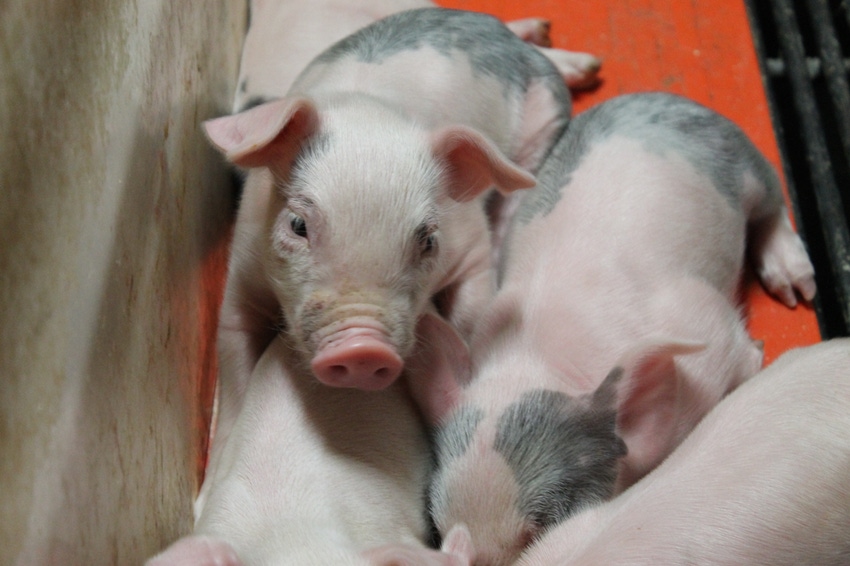Collaborative efforts help understand PRRSV
Network of progressive producers and practitioners helped discover recent PRRS outbreak.
February 9, 2021

The world has directed a great number of resources to control the current COVID-19 pandemic. Effectively controlling an emerging pathogen around the world certainly poses challenges at different levels and requires the implementation of a variety of measures. As hospital occupancy rates were rapidly reaching their capacity, a race against time began as the world tried to understand how this previously unknown pathogen was rapidly spreading, how it could be prevented, and how it could be clinically managed. Such crisis and unprecedented situation led humanity to join forces and work together; however, the lack of trust and miscommunication delayed the response. Throughout the world, teams of physicians, epidemiologists, virologists, immunologists, and vaccine companies—to name a few—were put in the spotlight to tackle these questions. The orchestrated actions developed by these multidisciplinary teams have proven that collaborative efforts in times of crisis pay off.
Through a network of progressive producers and practitioners that participate in the Morrison Swine Health Monitoring Project (MSHMP), a somewhat similar infectious disease situation in the U.S. swine industry was recently discovered. However, contrary to the COVID-19 pandemic efforts, one big difference was that producers and practitioners, through the MSHMP, began working together much faster as a working relationship based on trust had existed for at least a decade.
As a virulent emerging strain of Porcine Reproductive and Respiratory Syndrome virus (PRRSV) arose in a specific area of the country, MSHMP began to gather information related to the virus (e.g. virus genetic sequence), date, location, herd size, and farm type. Information started flowing very rapidly into our databases. Such rapid response highlights the benefits of collaborative efforts of all stakeholders (e.g., veterinarians, companies, academia) in investigating challenging situations as it helped to promptly characterize both the pathogen and the magnitude of the outbreak.
There are different ways to classify the PRRS viruses. One of them is by assigning a “pattern,” which is dictated by the combination of three numbers, also known as RFLP (short for Restriction Fragment Length Polymorphism). This classification is commonly used in the field as it is easy to communicate. However, it may not correlate well with how similar these viruses are from a genetic standpoint.
A second method to classify PRRSV is by allocating viruses to lineages, based on phylogenetic relatedness. We found that viruses from this current outbreak were classified as Lineage 1C viruses, most of which were also classified as RFLP 1-4-4. Such classification has certainly helped guide the investigation as there are multiple unrelated 1-4-4 viruses co-circulating simultaneously in the pig population. Still, we found that this particular outbreak is comprised by a newly emerged clade within Lineage 1C. A precise characterization of the virus is crucial to better understand the situation and investigate the potential transmission and dissemination pathways.
This new emergent strain was reported to cause high abortion as well as pre- and post-weaning mortality rates, which clearly explains why stakeholders are concerned. The current outbreak began in the fall of 2020, and involves breeding and growing pig farms from different pig production companies located in a 50-mile radius. Sequences from this outbreak showed high similarity, with identical viruses being detected across farms from different companies. All of this information has been summarized and shared back with producers and veterinarians. As the investigation continues, and parties involved in the outbreak continue to express their interest and willingness to share more data, more epidemiologic studies are being conducted.
The current example clearly demonstrates the power of a collaborative network between producers, veterinarians and scientist (e.g. MSHMP) to rapidly respond before an animal health threat. Without this collaborative effort, timely communication to industry stakeholders to prompt biosecurity improvements and monitoring with the ultimate goal of containing a newly emerged pathogen would not be possible.
The authors would like to acknowledge the MSHMP participants and practitioners involved in the current outbreak investigation for their willingness to provide data. The Morrison Swine Health Monitoring Project is a Swine Health Information Center (SHIC) funded project.
Source: Mariana Kikuti, Catalina Picasso-Risso, Igor Paploski, Nakarin Pamornchainavakul, Albert Rovira, Kim VanderWaal, Cesar A Corzo, Morrison Swine Health Monitoring Project, University of Minnesota College of Veterinary Medicine, are solely responsible for the information provided, and wholly own the information. Informa Business Media and all its subsidiaries are not responsible for any of the content contained in this information asset.
You May Also Like



